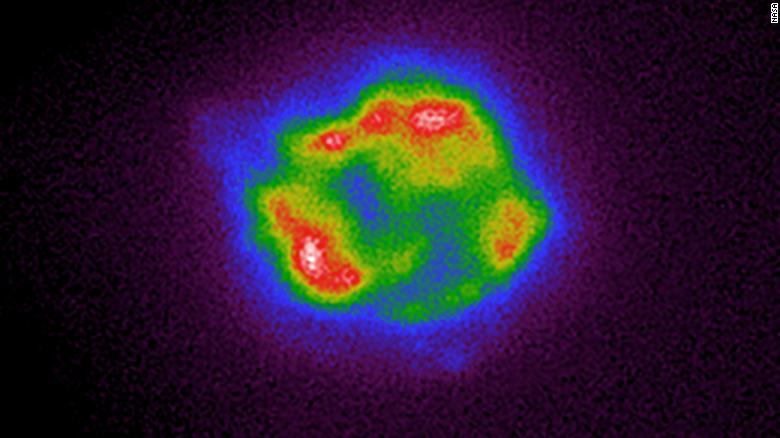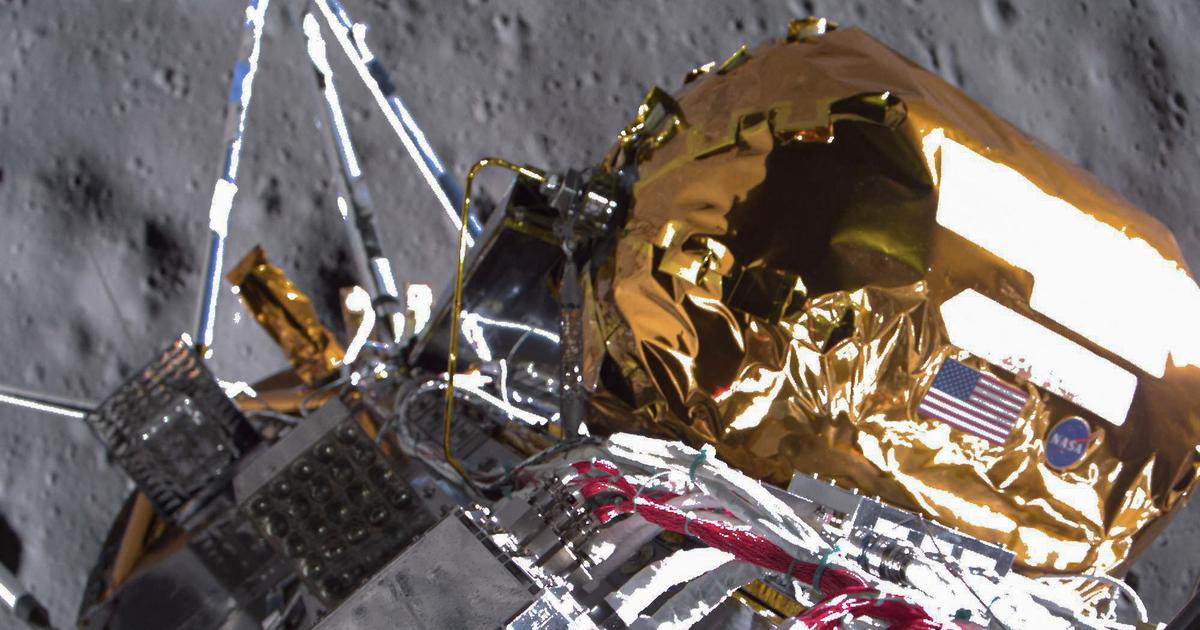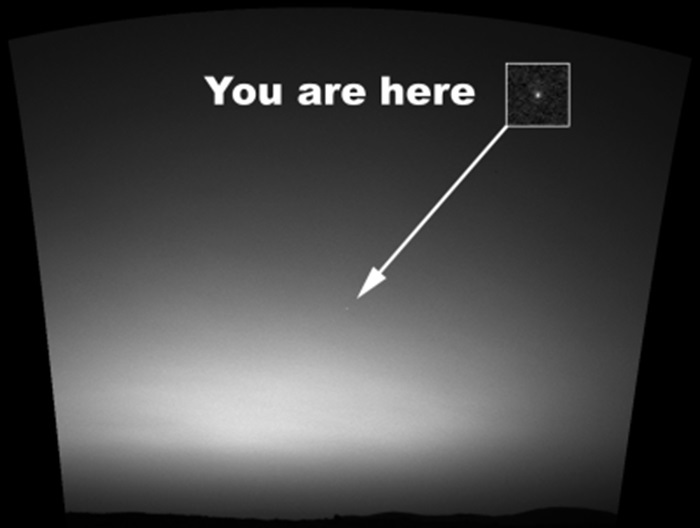A magenta cloud, the first image from the IXPE mission 0:44
(CNN) --
A new set of X-ray eyes in the universe allows us to see extreme objects like never before.
Just over two months after launching into space, NASA's newest rover, the Imaging X-Ray Polarimetry Explorer, or IXPE, shared its first images.
And they are impressive.
The images offer a glimpse of Cassiopeia A, the famous remnant of a supernova, or exploding star.
This image shows the Cassiopeia A supernova remnant, combining early X-ray data collected by NASA's X-ray Imaging Polarimetry Explorer in purple, with high-energy X-ray data from NASA's Chandra X-ray Observatory. NASA in blue.
Clouds of bright purple gas can be seen around the star's remnants.
These clouds were created when shock waves from the explosion heated the surrounding gas to incredibly high temperatures, accelerating high-energy particles called cosmic rays.
They discover a "cosmic spider", source of powerful gamma rays in space
"The IXPE image of Cassiopeia A is gorgeous, and we look forward to analyzing the polarimetry data to learn even more about this supernova remnant," said Paolo Soffitta, the Italian IXPE Principal Investigator at the National Institute for Astrophysics in Rome, it's a statement.
The spacecraft, a collaborative effort between NASA and the Italian Space Agency, carries three telescopes.
Although Cassiopeia A has been observed before with other telescopes, the IXPE mission is designed to reveal new insights about some of the most extreme objects in the universe, such as supernovae, black holes, and neutron stars.
advertising
This image from the IXPE mission maps the intensity of X-rays from Cassiopeia A. Colors, including cool magenta, blue, red, and white, correspond to the increasing brightness of the X-rays.
The beautiful Cassiopeia A supernova remnant is located about 11,000 light-years from Earth.
It is now a giant expanding bubble of hot gas, and is the youngest known remnant of a supernova explosion, dating back 340 years, in our Milky Way galaxy.
Light from this supernova first reached Earth in the 1670s.
X-rays are very energetic light waves that are born from extreme conditions.
In space, these intense conditions include strong magnetic fields, collisions between objects, explosions, scorching temperatures, and rapid rotations.
This light practically carries the signature of what has created it, but the Earth's atmosphere prevents the X-rays from reaching the ground.
That's why scientists turn to X-ray telescopes in space.
IXPE, the telescope that will reveal mysterious secrets of the universe 0:59
What the new data on Cassiopeia A may reveal
X-ray data previously captured by NASA's Chandra X-ray Observatory can be seen in blue in the new image.
Chandra launched in 1999 and set eyes on Cassiopeia A immediately, revealing the presence of a black hole or neutron star at the center of the supernova remnant.
Black holes and dense neutron stars are often created by the violent event of a star's death.
"The IXPE image of Cassiopeia A is as historic as the Chandra image of the same supernova remnant," said Martin C. Weisskopf, IXPE principal investigator based at NASA's Marshall Space Flight Center in Huntsville, Alabama. it's a statement.
"It demonstrates the potential of IXPE to obtain new and previously unseen information on Cassiopeia A, which is currently being analyzed."
NASA's new mission orbits 600 kilometers above the Earth's equator and has just completed a month-long commissioning and testing phase of its instruments.
Although the IXPE observatory is not as large as Chandra, it is the first space observatory of its kind.
How this strange giant planet came to resemble a soccer ball
The satellite can observe an aspect of cosmic ray sources that is often overlooked, called polarization.
Light becomes polarized when it passes through something that causes its particles to spread out.
All polarized light bears the unique stamp of its source and what it has passed through on its way.
While unpolarized light waves can vibrate in any direction, polarized light only vibrates in one direction.
The data IXPE collected on Cassiopeia A can help scientists measure how polarization varies across the remnant, which is 10 light-years across.
Using IXPE to study the polarization of cosmic X-rays could help scientists better understand the remains of exploded stars, such as black holes and neutron stars, their environments, and how they produce X-rays. perspective of extreme cosmic objects could also reveal the answers to broader fundamental questions about physics.
NASASupernova








